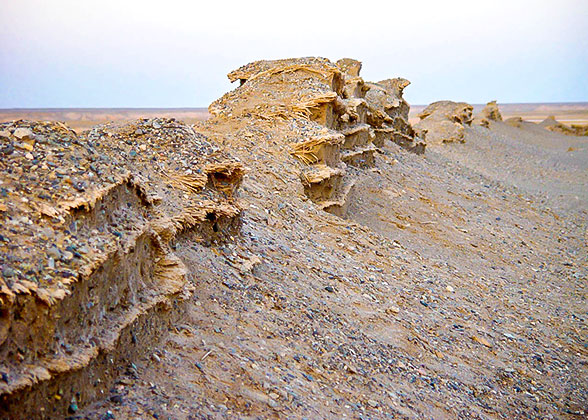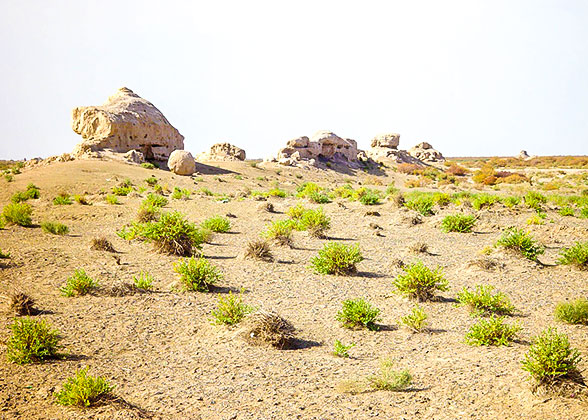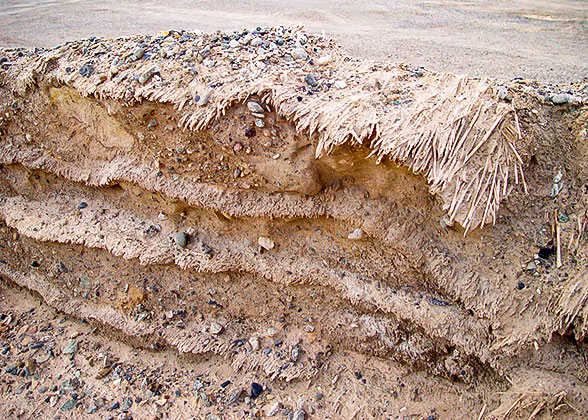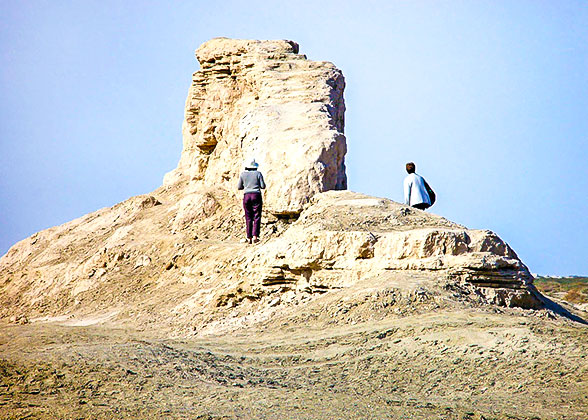Dunhuang Great Wall of Han Dynasty
 |
A large proportion of the Great Wall we see today was built during the Ming Dynasty (1368 – 1644). However, west of Yumenguan Pass in Dunhuang, Gansu Province lies a section dating from the Han Dynasty (206BC - 220), more than 1,300 years earlier than the Ming sections.
Basic Facts of Dunhuang Great Wall
![]() After the Han Emperor Wu (141 – 87 BC) occupied the Hexi Corridor, an important access point to west China in what is now Gansu, he gave orders for the construction of the massive Great Wall so as to consolidate the safety of the frontier region. Also his aim was to explore a possible trade route to countries that lay to the west.
After the Han Emperor Wu (141 – 87 BC) occupied the Hexi Corridor, an important access point to west China in what is now Gansu, he gave orders for the construction of the massive Great Wall so as to consolidate the safety of the frontier region. Also his aim was to explore a possible trade route to countries that lay to the west.
![]() The Han Dynasty section winds 85 miles (136 kilometers) in Dunhuang and dotted with more than 80 beacon towers.
The Han Dynasty section winds 85 miles (136 kilometers) in Dunhuang and dotted with more than 80 beacon towers.
![]() Due to natural disasters and destruction by man, it's hard to find much of the original wall. The best-preserved section built by the Han can be seen three miles (five kilometers) west of Yumenguan. It is only 440 yards (402 meters) long. The remaining ramparts have a height of 12.2 feet (3.7 meters), a bottom width of 3.3 yards (three meters), and a top width of 1.6 yards (1.5 meters).
Due to natural disasters and destruction by man, it's hard to find much of the original wall. The best-preserved section built by the Han can be seen three miles (five kilometers) west of Yumenguan. It is only 440 yards (402 meters) long. The remaining ramparts have a height of 12.2 feet (3.7 meters), a bottom width of 3.3 yards (three meters), and a top width of 1.6 yards (1.5 meters).
Guarding the World's Oldest Trade Route – Silk Road
The official, Zhang Qian was sent twice by Emperor Wu on diplomatic missions to the western regions. He marched along the Great Wall and opened up the world's first international trade route, the Silk Road. Since then, both economical and cultural communication between central China and the western regions became very frequent. Busy Persian and Han merchants traveling camel caravans shuttled to and fro along the road, carrying silk, chinaware, carpets and jade.
Piled up by Sand and Weeds
Instead of building with layers of stone or bricks like other sections, this section was built by using the local sand and plants. These two construction materials were added by putting one on top of another. When soft plants are rammed down in layers of sand, they are endowed with great strength with the plants turning as tough as steel and the sand into concrete. Together, they formed an impregnable defense line of the Han Dynasty.
|
|
Dense Beacon Towers – The Most Efficient Old Warning System
During your drive along the wall, you may find some mounds standing out on the desert. Please don't turn a blind eye to them. They are the relics of old forts and beacon towers, which were vital constructions for both military purposes and cross-border trading.
In the old days, forts and beacon towers stood every a few miles inside the ramparts in Dunhuang, where small groups of troops would be garrisoned. The many beacon towers provided an efficient communication system in the past. When enemies were sighted, smoke signals were used during daylight and beacon fires at night to pass messages to other towers. At other times, these beacon towers would serve as staging posts, providing supplies for the passing envoys and trade caravans.
 |
Travel Tips
![]() Admission Fee: CNY 40 (also includes the entrance fee of Yumenguan Pass, an important pass accessing the western China in the Han Dynasty, and Hecang Fortress, used for munitions storage in the olden days)
Admission Fee: CNY 40 (also includes the entrance fee of Yumenguan Pass, an important pass accessing the western China in the Han Dynasty, and Hecang Fortress, used for munitions storage in the olden days)
![]() Thousands of years of weathering make this section too fragile to allow visitors close contact, such as climbing on the wall or touch the ramparts. In order to protect this precious site and ensure visitors safety, the sections have been fenced off. This may seem a pity but it does ensure the site's future for further visitors.
Thousands of years of weathering make this section too fragile to allow visitors close contact, such as climbing on the wall or touch the ramparts. In order to protect this precious site and ensure visitors safety, the sections have been fenced off. This may seem a pity but it does ensure the site's future for further visitors.
How to Get there from Dunhuang City
There is no public bus to take you to the site. Generally, visitors will charter a minibus to take a one-day west-line tour of popular spots in Dunhuang, including the Western Thousand-Buddha Cave, Han Dynasty Great Wall, Yumenguan, Hecang Fortress, and Yardang National Geopark. The cost is about CNY 400 – 600.![]() See more: 6 Best Places to See Great Wall of China
See more: 6 Best Places to See Great Wall of China

